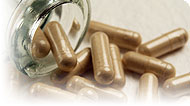Penn Herb Wellness Guide
Vitamin B3Find Products

Side Effects
Niacinamide is almost always safe to take in amounts of 1,000 mg per day or less, though rare liver problems have occurred at amounts in excess of 1,000 mg per day. Niacin, in amounts as low as 50100 mg, may cause flushing, headache, and stomachache in some people. Doctors sometimes prescribe very high amounts of niacin (as much as 3,000 mg per day or more) for certain health problems. These large amounts can cause liver damage, diabetes, gastritis, damage to eyes, and elevated blood levels of uric acid (which can cause gout).2 Symptoms caused by niacin supplements, such as flushing, have been reduced with sustained-release (also called ‘time-release’) niacin products. However, sustained-release forms of niacin have caused significant liver toxicity in some cases and, rarely, liver failure.3, 4, 5, 6, 7 One partial time-release (intermediate-release) niacin product has demonstrated clinical efficacy without flushing, and also with much less ofthe liver function abnormalities typically associated with sustained-release niacin formulations.8 However, this form of niacin is available by prescription only.
In a controlled clinical trial, 1,000 mg or more per day of niacin raised blood levels of homocysteine, a substance associated with increased risk of heart disease.9 Since other actions of niacin lower heart disease risk,10, 11 the importance of this finding is unclear. Nonetheless, for all of the reasons discussed above, large amounts of niacin should never be taken without consulting a doctor.
The inositol hexaniacinate form of niacin has not been linked with the side effects associated with niacin supplementation. In a group of people being treated alternatively with niacin and inositol hexaniacinate for skin problems, niacin supplementation (50100 mg per day) was associated with numerous side effects, including skin flushing, nausea, vomiting and agitation.12 In contrast, people taking inositol hexaniacinate experienced no complaints whatsoever, even at amounts two to five times higher than the previously used amounts of niacin. However, the amount of research studying the safety of inositol hexaniacinate remains quite limited. Therefore, people taking this supplement in large amounts (2,000 mg or more per day) should be under the care of a doctor.
Copyright 2026 TraceGains, Inc. All rights reserved.
Learn more about TraceGains, the company.
The information presented by TraceGains is for informational purposes only. It is based on scientific studies (human, animal, or in vitro), clinical experience, or traditional usage as cited in each article. The results reported may not necessarily occur in all individuals. Self-treatment is not recommended for life-threatening conditions that require medical treatment under a doctor's care. For many of the conditions discussed, treatment with prescription or over the counter medication is also available. Consult your doctor, practitioner, and/or pharmacist for any health problem and before using any supplements or before making any changes in prescribed medications. Information expires December 2026.


